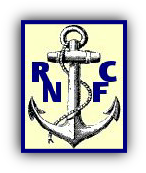
The Story of the
Holton Heath, Dorset, UK

Wartime Defence Measures
When the Royal Naval Cordite Factory was built, it was convenient for the transfer of Cordite to the Navy’s filling factories and considered safe from enemy attack. However, the development of aircraft during and after the First World War showed that the factory was vulnerable. In the 1930s the government identified many areas and facilities which could be a easily attacked by air and listed a series of “Vulnerable Points”. RNCF was included as VP504.
By Dr Bob Dukes
To provide some protection, a series of anti-aircraft gun batteries were installed immediately before the onset of war. These consisted of four batteries of heavy guns. Initially only a couple of old 3inch guns each, these were built up have the more modern 3.7 inch guns and increased to batteries of four. The batteries were situated some distance from the factory at Upton, Slepe, Northport and Arne as shown on the accompanying map (left). In actual fact the Slepe site was somewhat different having
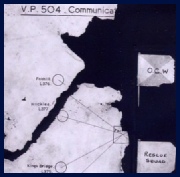
some old 4.5inch naval guns installed. It was also equipped at one time with an early mobile radar set.
Nearer to the factory a series of smaller calibre weapons were established. Again these were initially whatever was available, mostly heavy machine guns. Later these were replaced by 40mm Bofors guns, again shown on the map. Two of these smaller weapons were mounted on towers some 10m high to the west

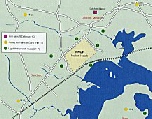
Mouseover to enlarge
of the factory. A few such towers were built in various locations across the country and, so far as is known, only three still exist including the two at Holton Heath. They were situated either side of the Poole-Wareham road and one is easily accessible on Sandford Heath. The other is on private land and is not accessible. Each tower was, in fact, two separate towers; one carrying the gun and the other a Kerrison predictor to follow the target and guide the gun. The two were separated by a few inches so that the firing of the gun did not disturb the delicate optics of the predictor.
The Kerrison Predictor was one of the first fully automated anti-aircraft control systems. It could aim a gun at an aircraft based on simple inputs like the observed speed and the angle to the target. The Kerrison's electromechanical analogue computer was the first to be fast enough to be used in the demanding high-speed low-altitude role, which involved very short engagement times and high angular rates.
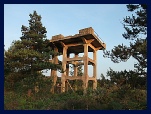
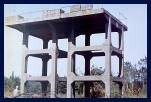
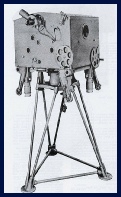
Kerrison
Predictor
Predictor
Just before the war a bunker was built inside the factory grounds. Known as the Control Trench or OP1, it could have been built to control all the factory defences, but a reorganisation of anti-aircraft defences across the country led to the establishment of a headquarters covering the area in Lytchett Manor just over a mile from the factory.
OP1 was certainly equipped with maps and plotting tables covering a large area around RNCF and was also responsible for the operation of the decoy sites (see Decoys) throughout the war.
Precautions were taken to avoid possible land attacks or sabotage. The Poole Wareham road was effectively closed with road blocks at Kings Bridge, where the A351 leaves the A35, and at Holton Heath. These were manned by the army but the factory also had its own company of the Home Guard. The 5th company, 7th battalion of the Dorset regiment consisted of some 180 men under the command of Major Sparks who, in his civilian role, was in charge of the Works Department. As well as guarding the site, the Home Guard company also manned the decoy sites.
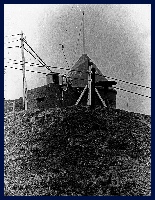
All employees were expected to assist in the defence of the site and many became fire-watchers. In addition to their normal shifts they did duty one night in five to deal with any incendiary attack. Since fire was an ever present danger many of the staff were trained to use fire fighting equipment, even the ladies in the Main Office.
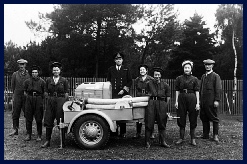
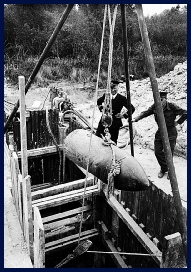
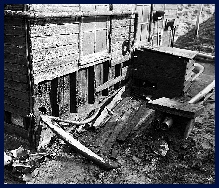
In actual fact only a very small number of light incendiary bombs fell within the factory boundary and only one actually set light to a building and was quickly extinguished. However, a large unexploded bomb fell near to the garage at the cross roads on the A351 and this took some days to extract.
Unexploded bomb
being extracted
being extracted
Incendiary damage
29th August 1940
29th August 1940
<
<

Quick Links